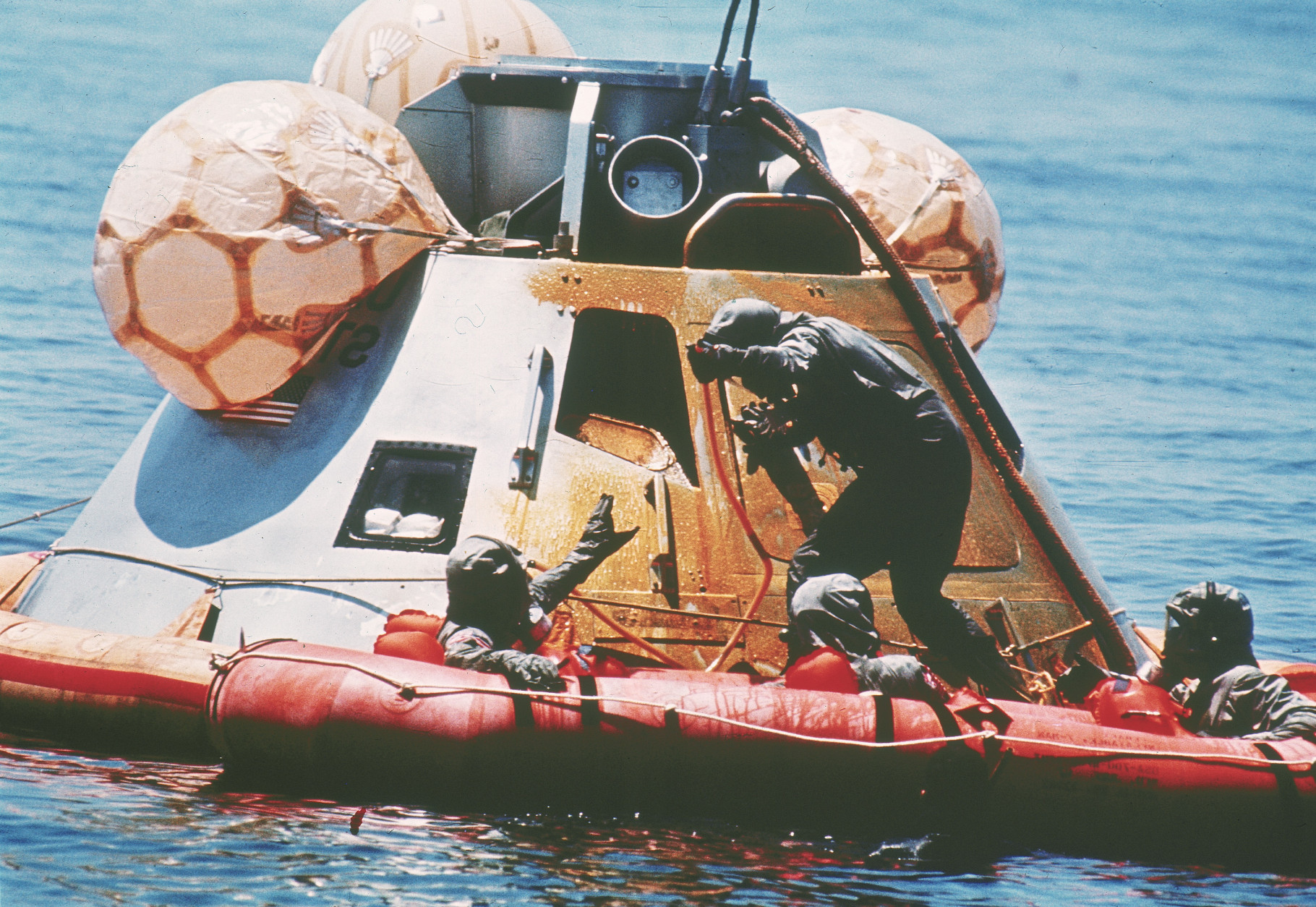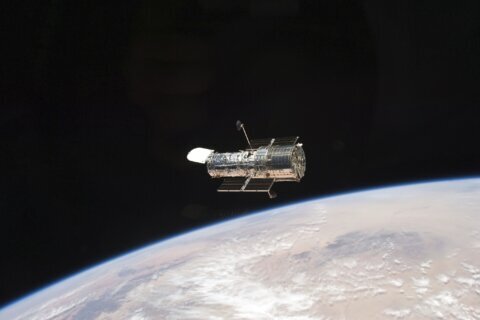When we remember the Apollo 11 mission to the moon, which launched 50 years ago on Tuesday and landed a half-century ago on Saturday, the first people we generally think of are the astronauts — Neil Armstrong and Buzz Aldrin, who walked on the moon, and Michael Collins, who orbited above.
But they were at the top of a pyramid that was built over eight years with the labor of more than 400,000 people, and author Charles Fishman celebrates that Earth-bound effort in his latest book, “One Giant Leap: The Impossible Mission That Flew Us to the Moon.” He spoke with WTOP about his book, the stories behind the mission and the importance of the flight to the moon.
“The 50th anniversary,” Fishman said, “is a great moment to go back and say, ‘How did we do this?’”
‘We had nothing’
The project to reach the moon started in May 1961, when President John F. Kennedy told Congress the U.S. “should commit itself to achieving the goal, before this decade is out, of landing a man on the moon and returning him safely to the Earth.”
“Literally eight years later, not even 100 months later, we were walking on the moon,” Fishman said. “You can hardly get a bridge replaced in eight years.”
That said, after four years of research, Fishman said, “What I came away with was not a sense of pessimism about America today compared to America in the 1960s — just the opposite. I came away reminded of what Americans will do when we are asked to.”
It’s no accident that the word “impossible” is in the subtitle of Fishman’s book. “We had nothing we needed to do the job in May 1961,” he said.
In eight years, Fishman said the U.S. literally invented space travel — and a lot of the items in modern life that get taken for granted. That took a lot of people — more Americans worked on the Apollo program than were in Vietnam — and it took an attitude.
“We love rising to the occasion as a country; we love being told something’s impossible, like going to the moon, and then turning around and saying, ‘Yeah? You thought it was impossible? We’re going to show you it isn’t quite impossible after all.’”
Will it sink?
When Kennedy challenged the country to go to the moon, scientists didn’t even know what they didn’t know about what it would entail, and what the effects would be.
It’s hard to remember now, Fishman said, how much had to be worked out: What is the moon made of? Would a spaceship sink into the surface? Would moon dust explode if it were exposed to air?
Even some more basic problems had to be worked out, Fishman said: In 1961, “There was a serious argument inside NASA about whether you would be able to think in space — whether human brains would work correctly in zero gravity.”
It’s not as dumb as it sounds: “There are all kinds of impacts from zero gravity: Zero gravity reshapes your eyeballs, and so astronauts going to space now for months at a time take eyeglasses that have been specifically designed to correct their eyesight after it deteriorates. So this question of whether our brains would work was a really legitimate question. … In May 1961, we really knew nothing. We had absolutely no clue.”
Beyond Velcro and Tang
To this day, some people don’t see the importance of traveling to space and the moon, Fishman said, and one of the wiseacre responses, he said, is “‘Yeah, we went to the moon; what’d we get from that? I guess we got Tang and Velcro, huh?’”
Fishman’s Twitter feed includes a well-researched, cranky response to that stereotype, and it has gotten to the point where NASA keeps a page on their website to address the misconception.
For one thing, Fishman pointed out, Tang was invented in 1958; Velcro, in Switzerland in the 1940s. For another, “The astronauts didn’t particularly like Tang,” he said. They could have taken it to the moon if they wanted, but they didn’t.
All kidding aside, Fishman said, “We got something really, really important from going to the moon — we got the world we live in now. In fact, the computer development and the computer advancement, the miniaturization that Apollo required, laid the foundation for the digital revolution.”
In 1961, computers were about three times the size of a refrigerator; the computers on Apollo 11 were the size of a briefcase. They contained the first integrated circuits and, for the first time, human lives were dependent on computers. And the moon mission changed the way people thought about computers.
“Technology was something associated with weapons — really, with atomic weapons,” Fishman said. “By the end of the decade, we had spent 10 years watching people sitting at computer consoles. They weren’t wearing uniforms; they were wearing white shirts, and they were doing the hardest thing you could imagine doing — they were using computers to fly to the moon.”
“And so, at the end of the decade, people [saw] how computers can be useful. And also [that] they’re dependable. You can trust them, because we put the lives of our astronauts in their hands, and it all worked out fine. So, it must be OK to use computers to analyze advertising data or run the elevators in your skyscraper. … It’s become all too common to sort of follow the Silicon Valley version of where computers came from, but in fact, going to the moon was hugely important to the world we live in.”
But more than anything, Fishman’s goal with his book was to pay tribute to the hundreds of thousands at NASA and private contractors who made the moon mission possible. And he said the astronauts wanted the same.
“The astronauts are the first people to say, ‘We got to ride to the moon, but back on Earth, there were people who made it possible.'”
And the story of the impossible mission resonates today: “It’s a remarkable story, and it said a lot about who we were, and you know, we’re arguing about who we are. I think it’s great that the anniversary is coming along and that we’re talking about this.”
Did you know?
It’s not surprising that, in his research, Fishman came up with some great stories. Check out some of the fun — and impressive — facts below, from Fishman’s conversation with WTOP and from his book, “One Giant Leap: The Impossible Mission That Flew Us to the Moon.”









